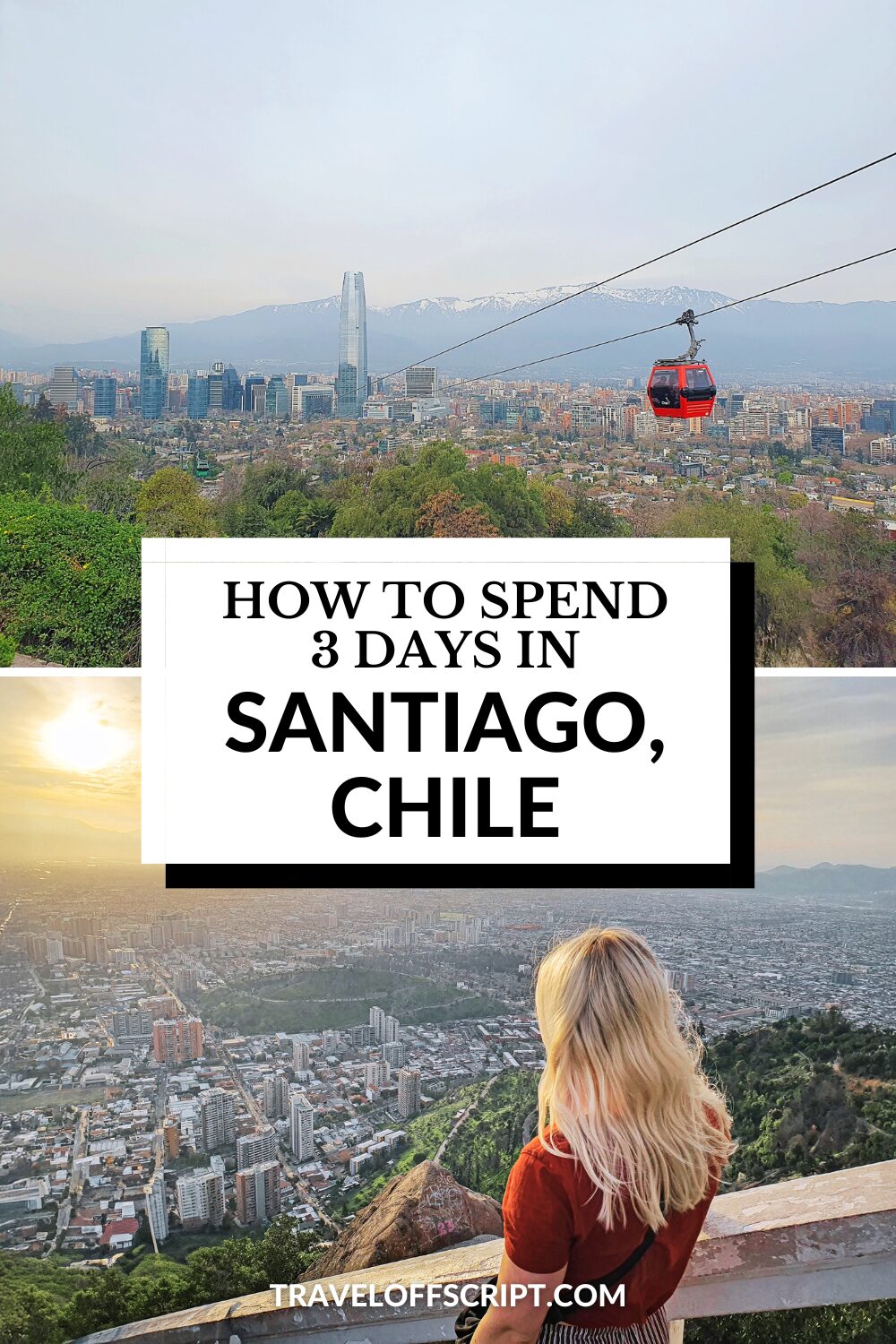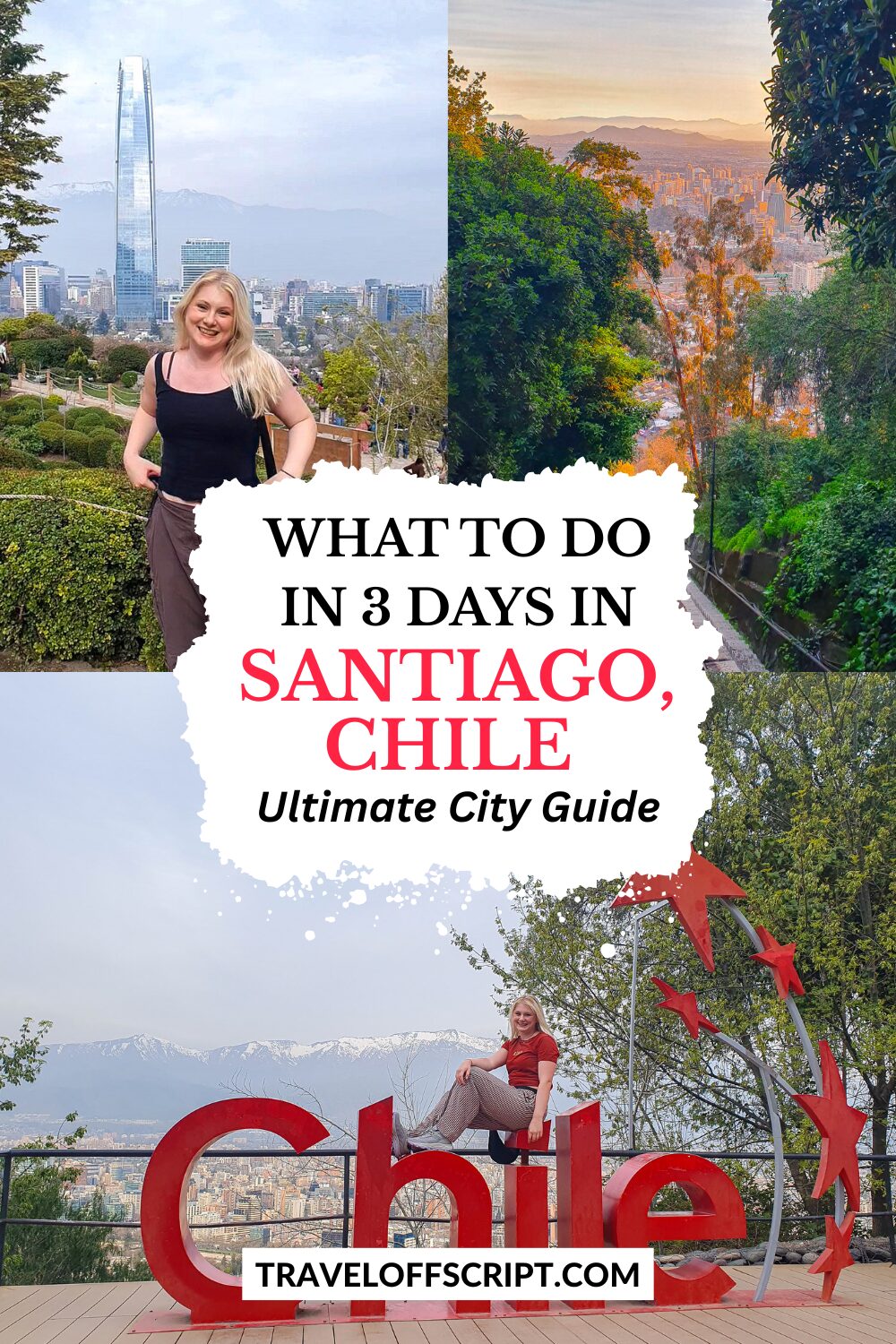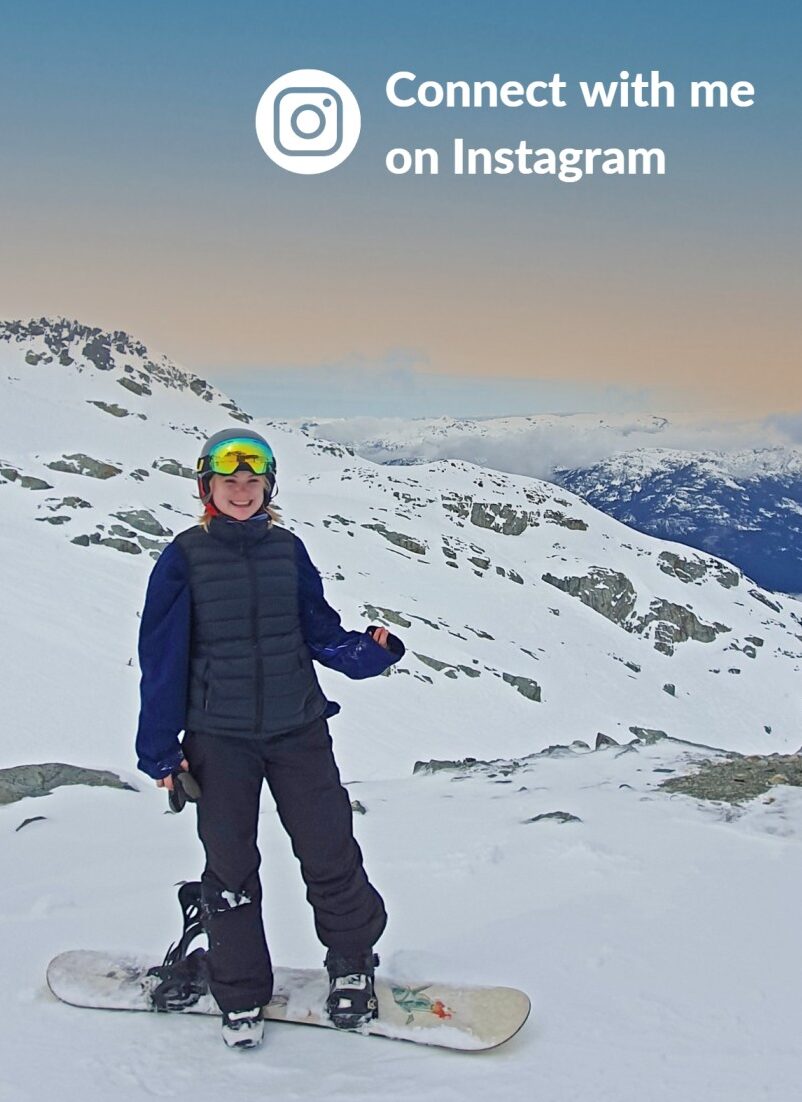The Ultimate 3-Day Santiago de Chile Itinerary for Solo Travellers
- June 6, 2025
- No Comments
Santiago is the capital of Chile and likely your gateway to exploring the country further. Surrounded by the Andes mountains, the city is a vibrant blend of history and modern with plenty to discover in three days.
Have you ever arrived in a new country after a 22-hour flight and felt completely lost?
Well, me too. Most recently, that was when I arrived in Chile’s capital, Santiago. Since arriving, I have learned so much about the lively city, its hidden gems and the varied day trips you can take from here. The city has gone from one I was a little apprehensive about visiting to one of my absolute favourite cities across the world.
Here is everything you need to know for the perfect trip to Santiago, Chile, from public transport to accommodation and tips, as well as the ideal 3-day itinerary for Santiago:
Table of Contents
ToggleHow to get to Santiago?
You will likely be flying into Santiago Airport (check for flights here). The cheapest way to get to the city centre from Santiago de Chile Airport is by using public transport, specifically by bus and then the metro. It is extremely affordable and surprisingly quick and easy if you know where to go and what to take – check out my full guide below:
Related Article: How to Get from Santiago de Chile Airport to the City Center on a Budget
Alternatively, you could get an Uber, which will cost about CLP$20,000 (~16GBP). They pick you up at the elevator exit in front of Door 5. Some sources say uber isn’t allowed to pick up at the airport, however, I saw plenty when I was there and my AirBnB host also recommended it. I think they aren’t allowed in the normal taxi pickup area, so your driver will let you know where to go for pick-up.
Another great alternative is getting a Transvip transfer that you can pre-book. Prices start at just CLP $9.400 (~7.50GBP) for a shared van which aims to take around 45 minutes to the city. This company is known for not always being super punctual, so I wouldn’t rely on it to get to the airport but for getting to the city centre, it’s fine.
Where to stay in Santiago?
Santiago de Chile is a little different than many other cities as in you don’t want to stay in the centre, at least not the Old Centre (Anywhere near Plaza des Armas). Unfortunately, over the past few years this area has become very unsafe especially at night. Better areas to stay in are Providencia, Barrio Italia, Las Condes and Lastarria.
Best hostels in Santiago for backpackers:
Merced 88 – Located on the edge of Providencia and right by the trendy district of Lastarria, this hostel is a great budget option. It is safe, very sociable and even has female dorms.
Hostal Forestal – This hostel is well-known in the traveller community. It is clean, central and offers free breakfast.
Best hotels in Kyoto:
$Hostal Boutique Casa La Barca– while it is called hostel, this accommodation only offers private rooms at really affordable prices. It’s in a great area with outstanding reviews.
$$ Hotel Bidasoa – Beautiful hotel and rooms in a super safe area with breakfast included.
$$$ The Singular Santiago, Lastarria Hotel – A luxury hotel with gorgeous rooms, a spa, fitness centre and more.
How to get around Santiago, Chile using public transport?
Santiago has an extensive metro system as well as buses. You pay with a bip! card where a single fare lasts for two hours and you can switch between modes of transport. The card costs 1550CLP ($1.70) and you have buy it in cash. You can then recharge it at metro stations and a ride costs between 610-800 CLP.
Best Things to Do in Santiago de Chile Over 3 Days
This itinerary will start in the city centre, cover all the major neighbourhoods of Santiago and then go into some daytrip options.
Day 1: Central neighbourhoods and street art
Start with a free walking tour of Downtown Santiago
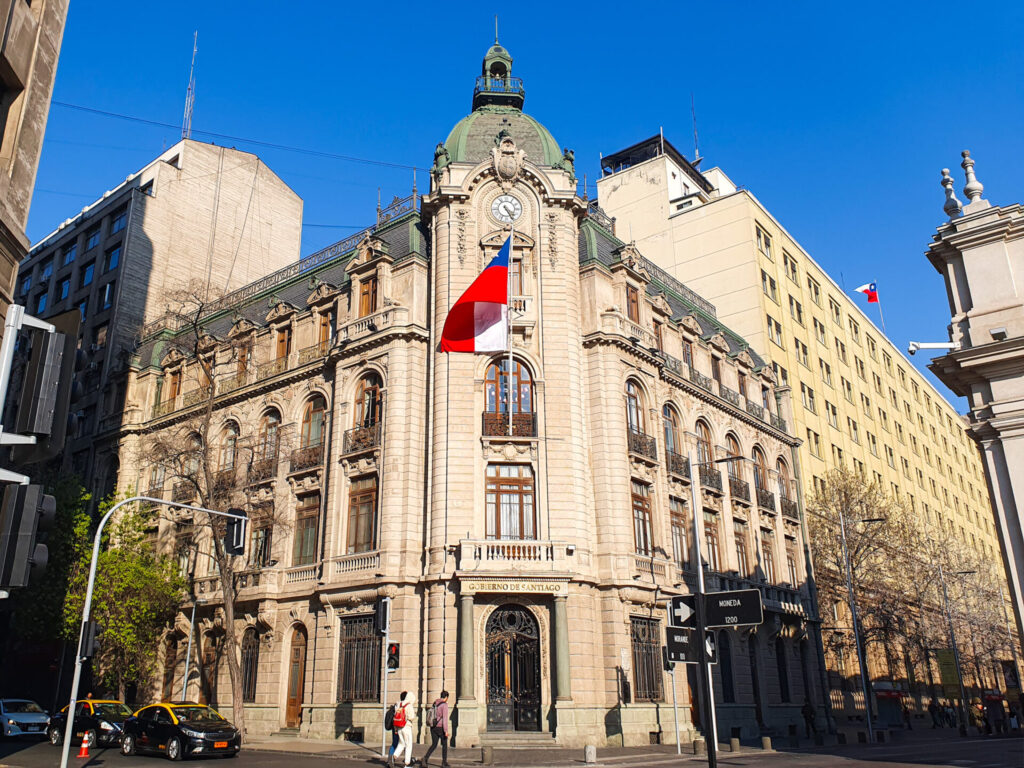
I always love starting my adventure in a new city with a free walking tour where your tip at the end. They are always locally run and give you an overview of the city. In Santiago this is particularly important as my tour guide also gave lots of information on things to be careful of, how to stay safe, where to go, where to eat and more.
I would recommend a tour of downtown and historic Santiago (most of the tours will go here) as there is a ton of history and cultural significance to this area and how it has developed over the past few years. The area is also one of the ones you should be a bit more wary of, hence it is great to have a guide with you and be in a bigger group.
Tours will usually cover the main attractions here such as Bolsa de Comercio de Santiago, the Presidential Palace, Plaza des Armas and the Metropolitan Cathedral of Santiago de Chile.
If your tour does not include it, I would recommend heading into the Metropolitan Cathedral of Santiago de Chile. It features a gorgeous rooftop and beautiful architecture. Plaza des Armas also always has something going on, though I would be extra careful here – the area is known for petty crime and a huge no-go at night.
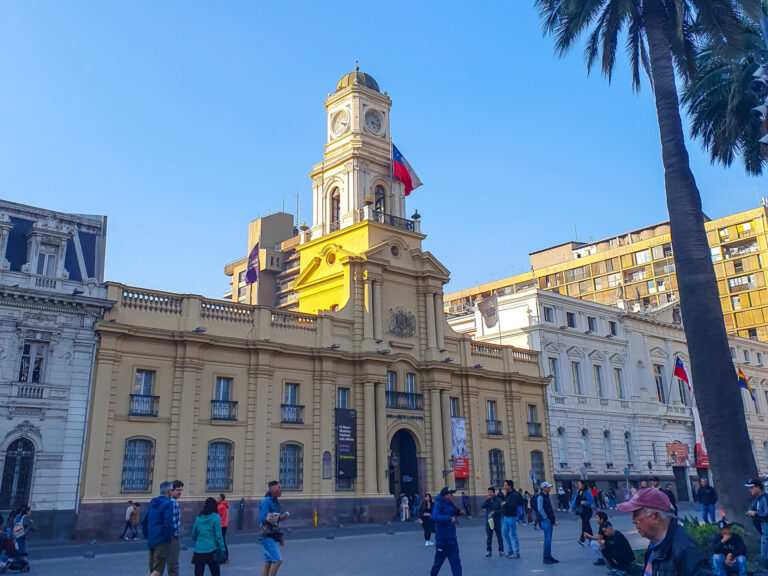
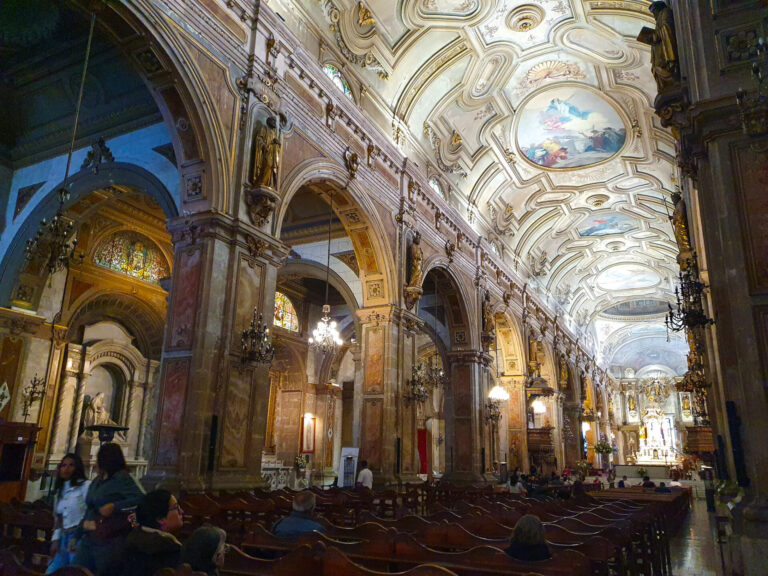
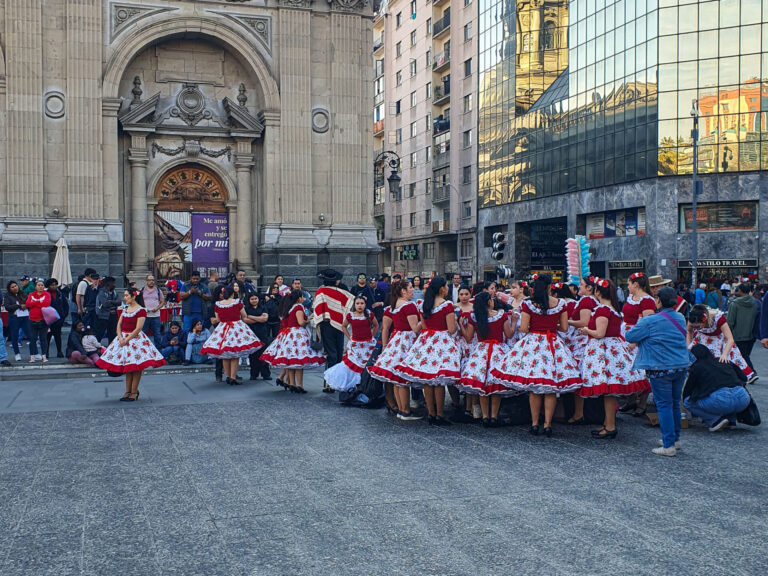
Head towards Santa Lucia Hill with the Neptune Fountain

Some tours will already include this, but check out the Neptune Fountain in the Cerro Santa Lucia on your way out of downtown. The fountain is beautiful with lush palm trees around it. You could also climb Santa Lucia hill behind it that leads up to the Hidalgo Castle for beautiful views over Santiago.
Marvel at the street art of Bellas Artes
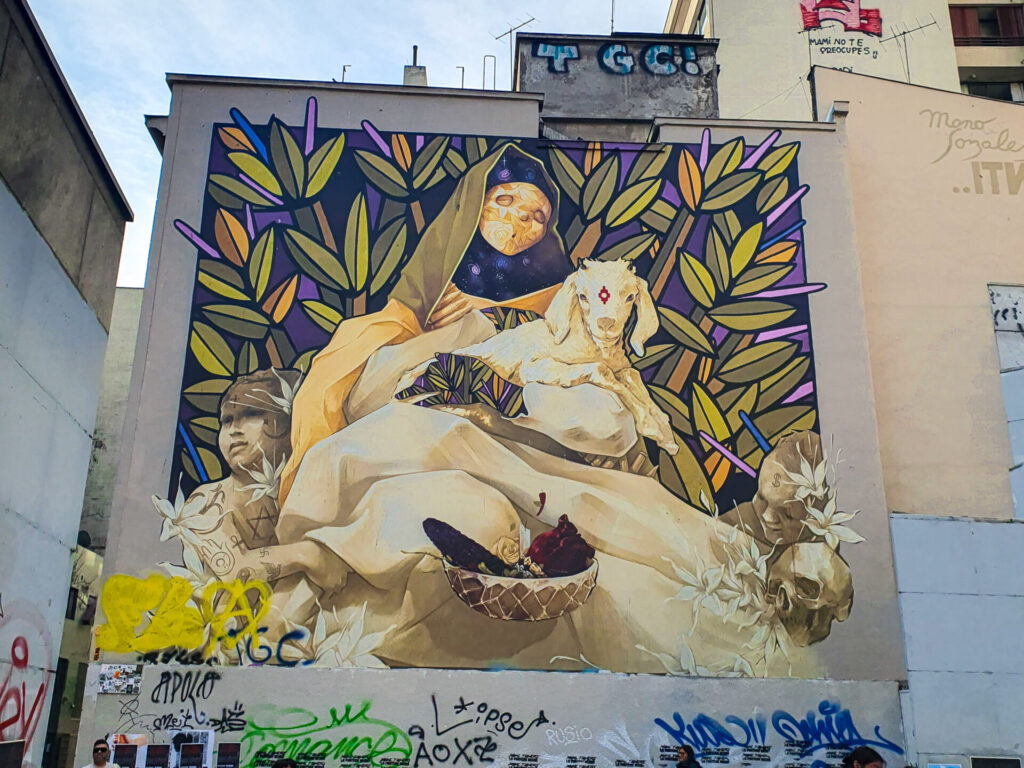
The neighbourhood of Bellas Artes is home to Santiago’s museum of fine art as well as a myriad of street art paintings that cover the houses on every corner. I would recommend to just wander along the streets and admire the beautiful art that can be found here.
Head to Wonderland Café for a magical afternoon break
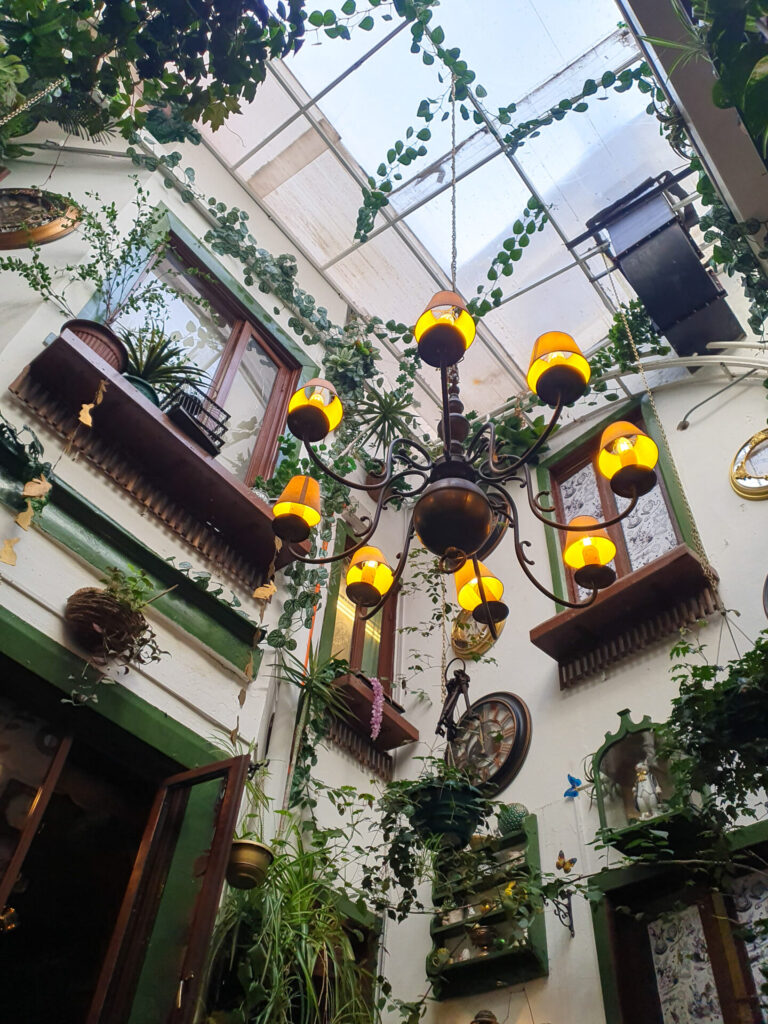

On your way to the next neighbourhood, make a stop at Wonderland Cafe. I at first thought it was over-hyped and overpriced, but the cafe has a magical charm to it and the cakes here are delicious. The whole building is in the style of Alice in Wonderland, and the top floor is a whimsical dreamscape of decorations complete with a souvenir shop.
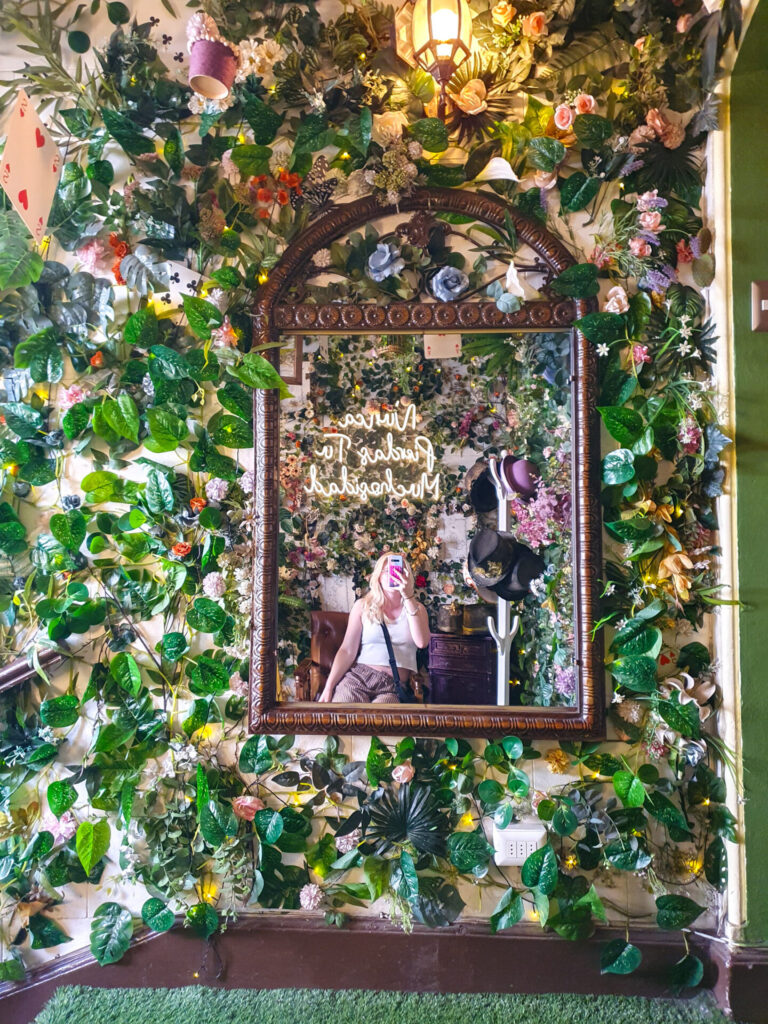
Check out the vibrant mix of culture and artists in Lastarria

Lastarria is the cultural hotpot of Santiago. Here you will find bustling street markets full of handmade art and souvenirs, beautiful buildings in the neo-classic style and a bohemian vibe that is different to many other areas of Santiago.
Make sure to wander down Paseo José Victorino Lastarria and check out the market stalls there. Don’t worry if you suddenly see them scrambling – it’s likely police is near and no one has a license to sell.
As it is nearing evening, you will likely find many people here in the trendy cafes and small restaurants eating their “La Once Chilena”. It is a light snack or meal enjoyed in the early evening, often in the form of pastries or a selection of cold snacks.
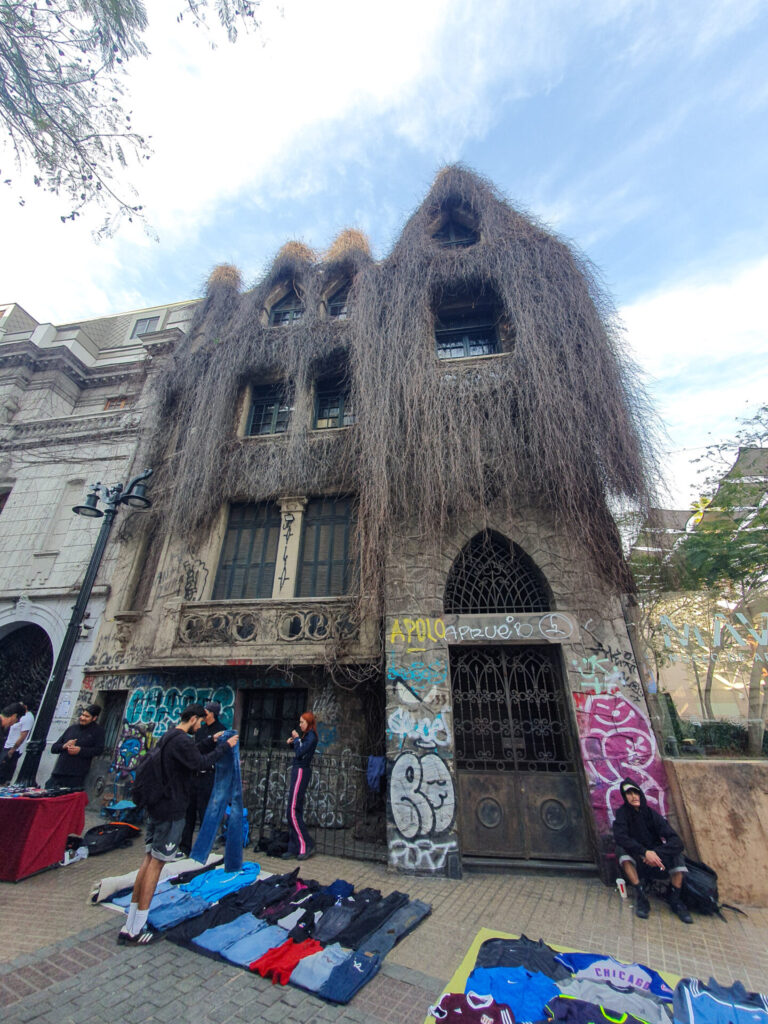
Day 2: Las Condes and Cerro San Cristóbal
Explore the area of Las Condes and huge Cenco Costanera Shopping Centre
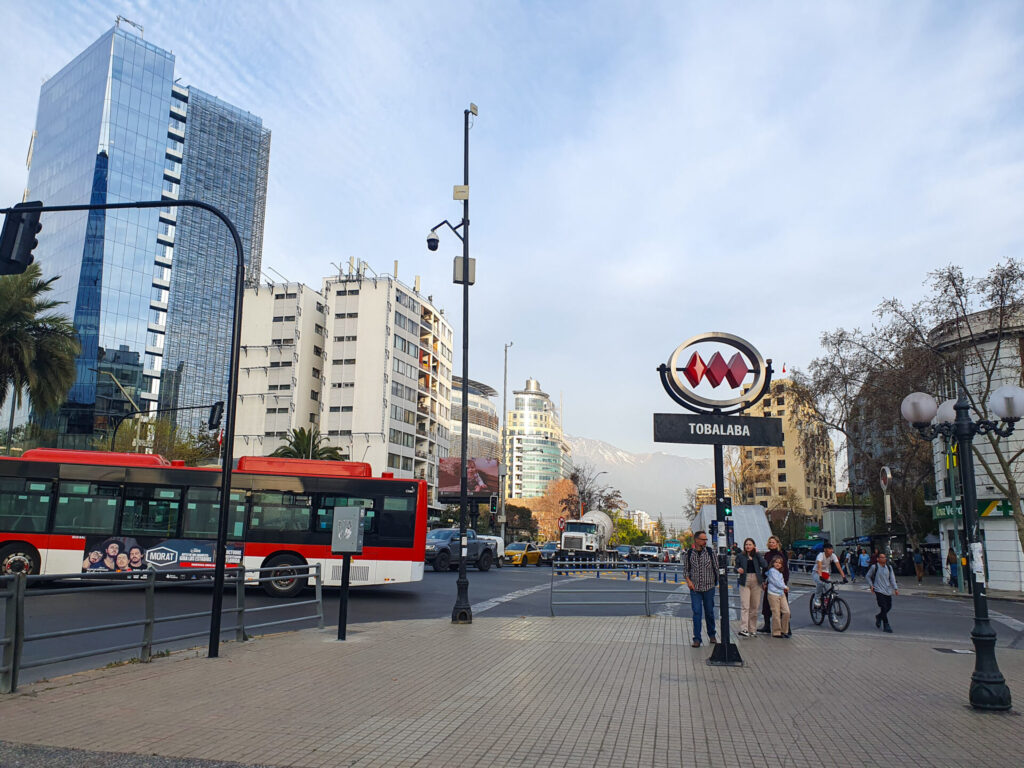
Hop on the metro and head to Tobalaba to start exploring the Las Condes neigbourhood. In recent years, this has become the centre of politics and business in Santiago, after leaving the downtown area. Here you will find modern skyscrapers, the huge shopping mall Cenco Costanera (where I got lost and couldn’t find an exit for an hour) as well as the Gran Torre Santiago, the tallest tower in South America.
Enjoy the European feel of Paseo La Villa
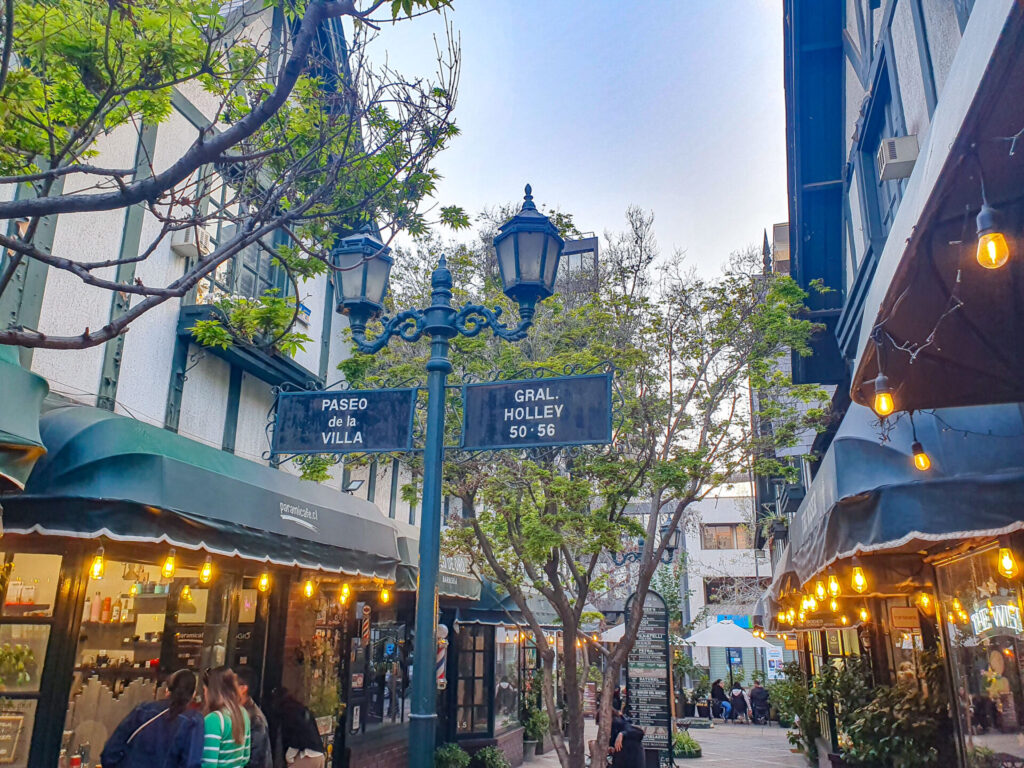
Once you have made it out of Cenco Costanera, make your way to Paseo la Villa – a hidden street with European-style buildings that house shops selling local delicacies. It’s a super cute area and so different to the rest of Santiago in terms of architecture and overall vibe.
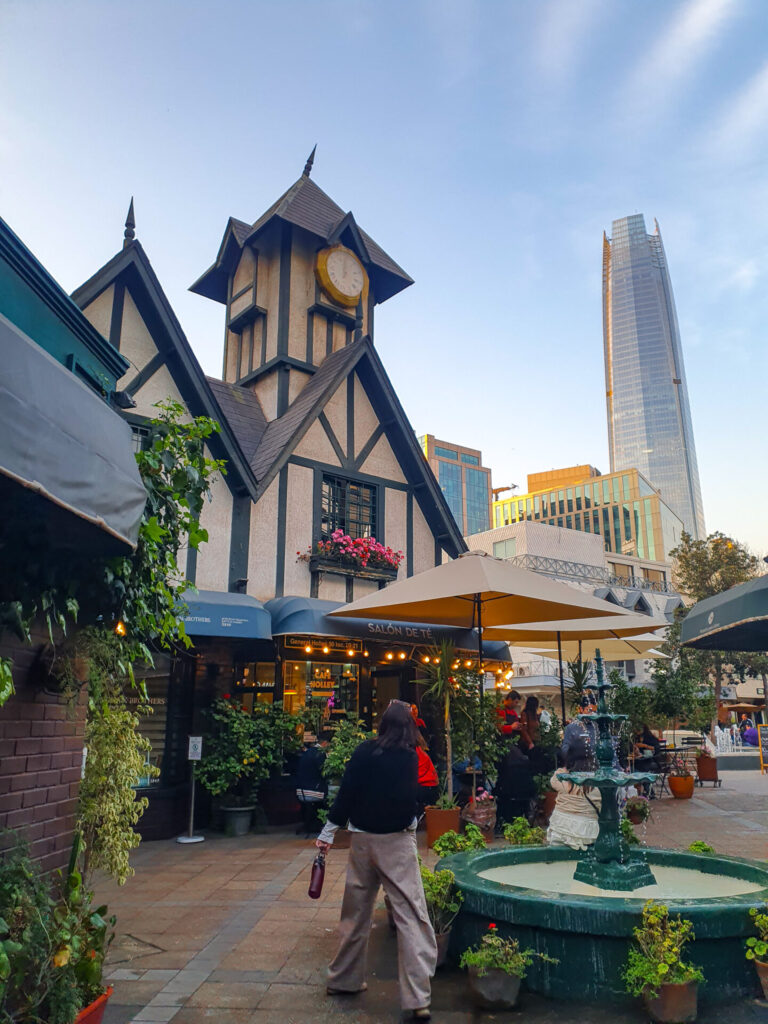
Head to the Japanese Garden for stunning views
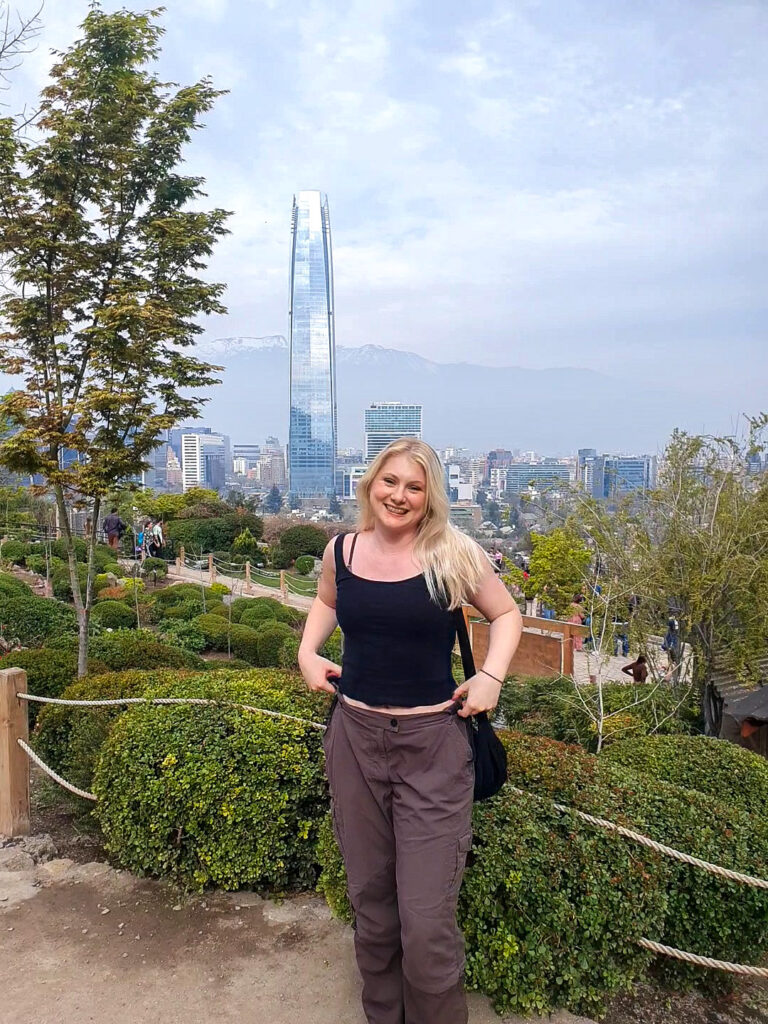
The Japanese Garden is not far from Cenco Costanero and at the beginning of the hike to Cerro San Cristóbal. It resembles a traditional Japanese garden with beautiful architecture and plants. The views from here over Santiago and the mountains in the distance are amazing.
Hike up Cerro San Cristóbal (or get the funicular)
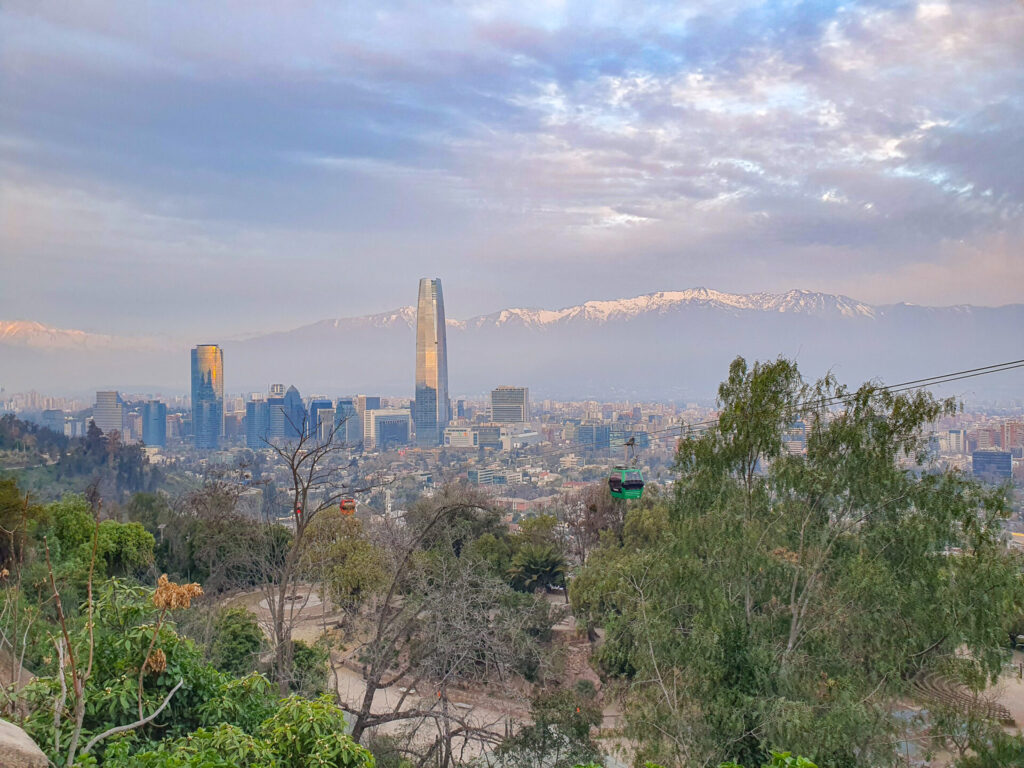
The best view of Santiago is at the top of Cerro San Cristóbal, with an elevation gain of about 300m. The walk up the hill takes about one hour starting from Oasis station. You will get beautiful sweeping views over Santiago and the Andes mountains. Hiking trails are pretty clearly walked and there will be lots of other people heading up too. On the walk, you can spot the famous red Chile sign and grab a Mote con huesillo – a typical Chilean drink made of Peach liquid, sugar and fresh cooked husked wheat berries.
Alternatively, you can also take the cable car up which only takes around 10 minutes. The station is called Oasis station and near the Japanese park.
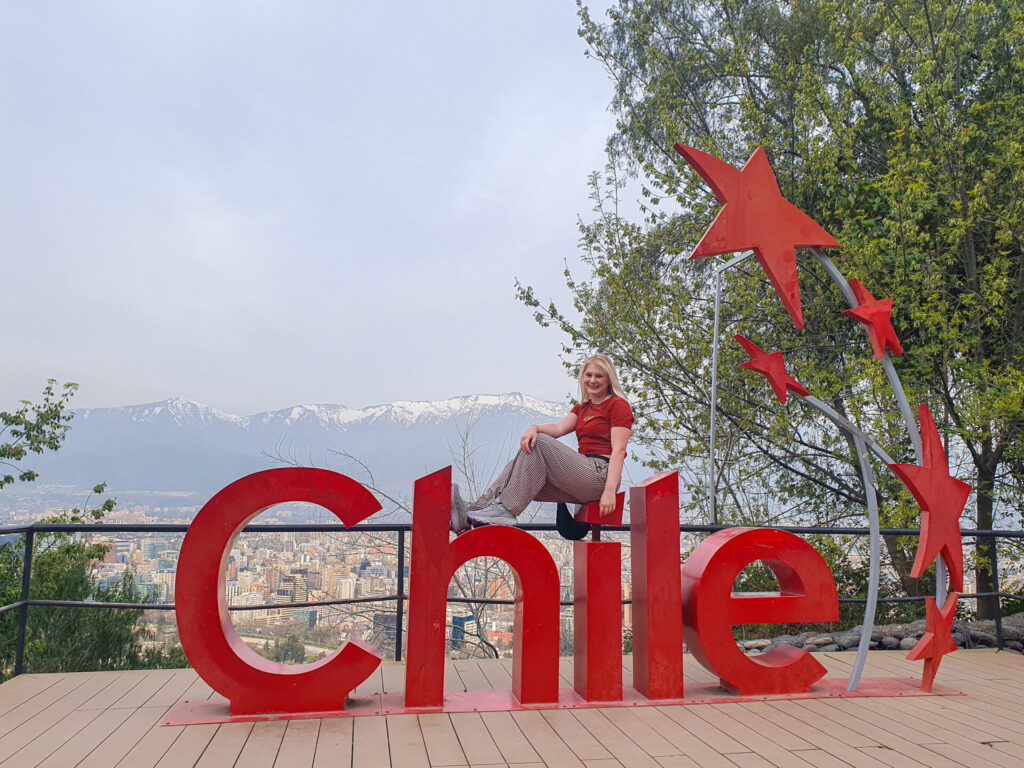
Watch the sun set over Santiago

At the summit you will find a few food stands, a big park to walk around as well as a 22-meter statue of the Blessed Virgin Mary. Climb up the stairs to the statue for the most incredible views over Santiago, especially during sunset.
From here, you don’t have to walk down again but can take the funicular to the Bella Vista neigbourhood. It costs 1600 CLP one-way ($1.80).
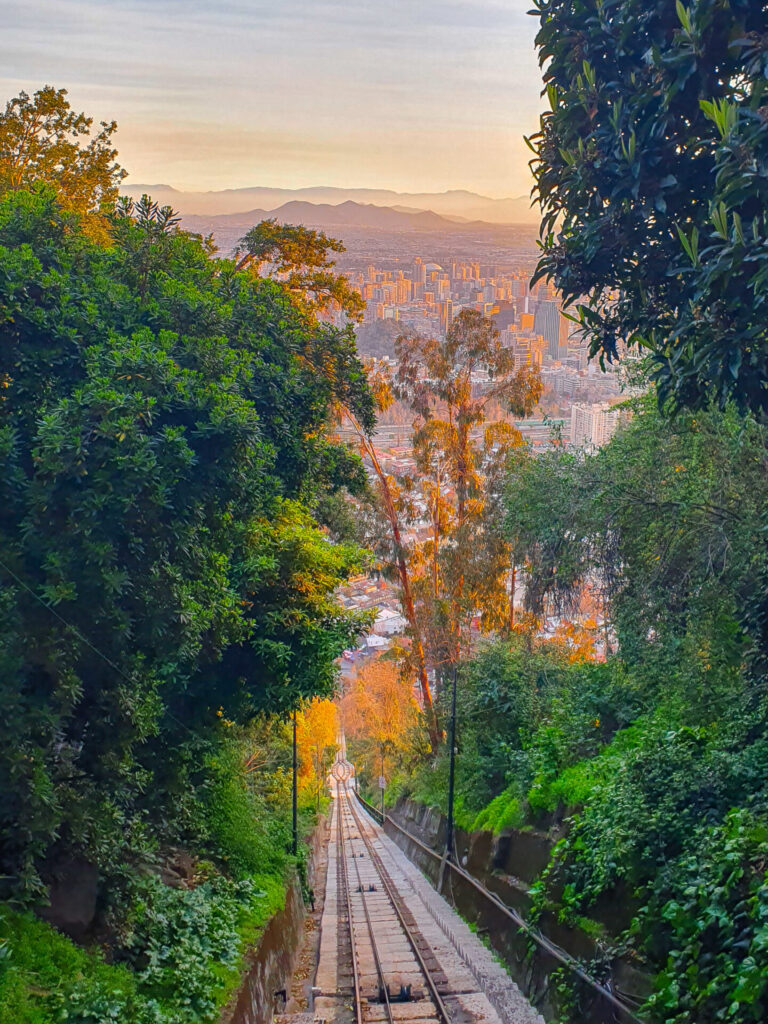
Have dinner in the lively barrio Bella Vista
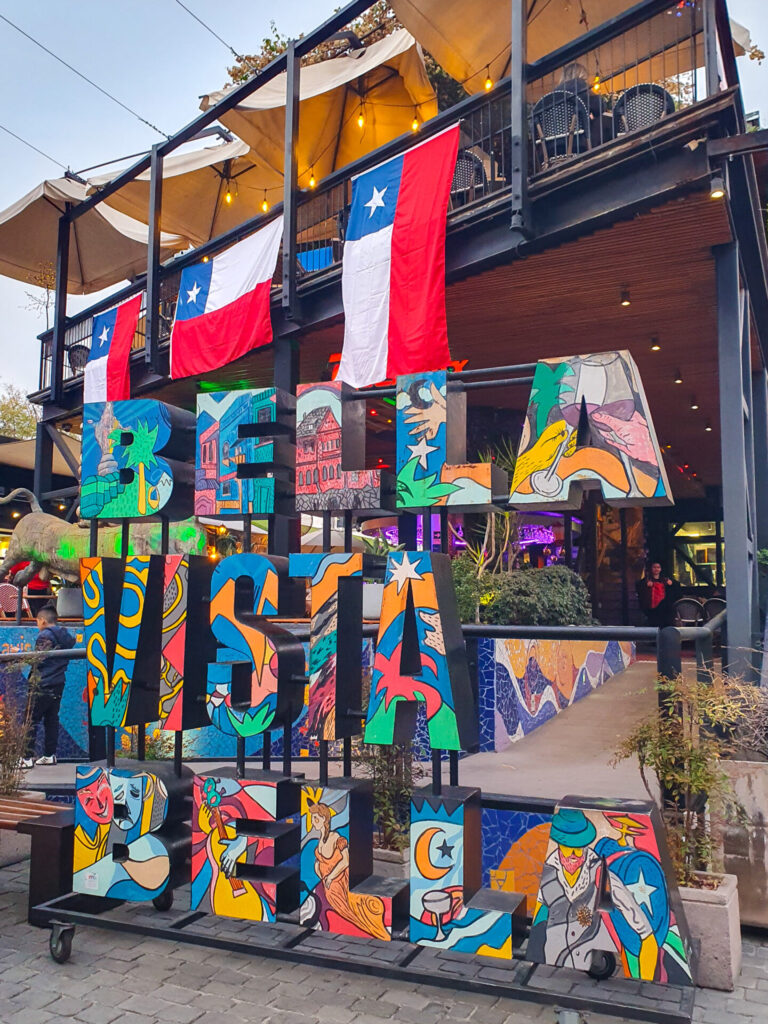
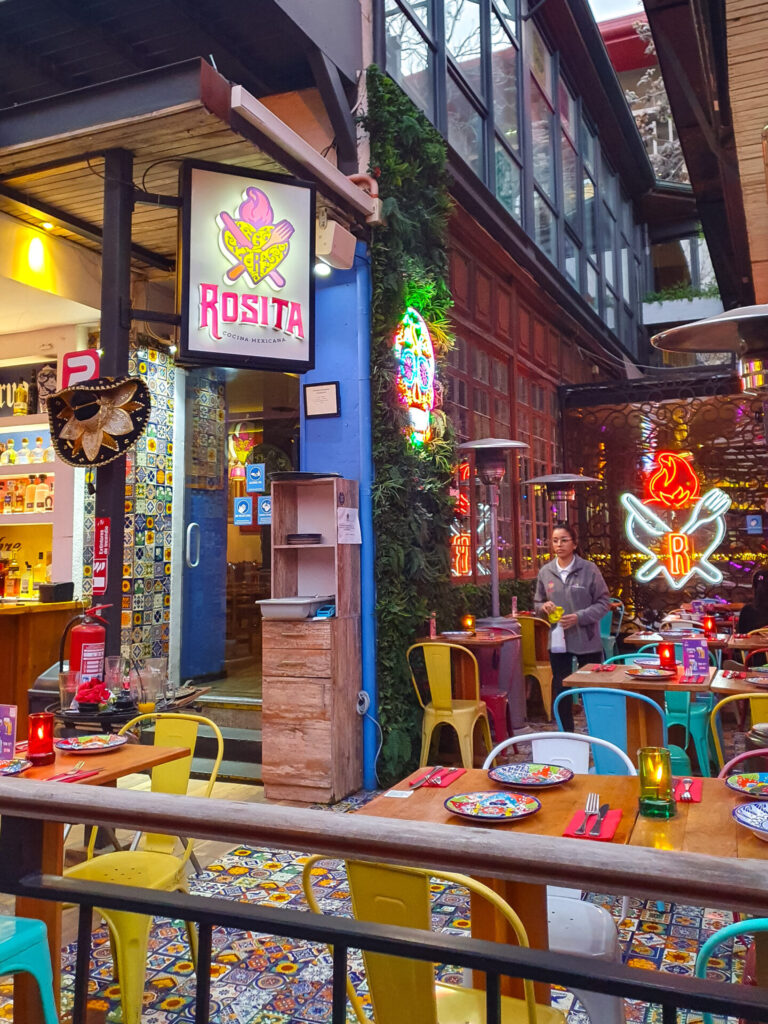
Bella Vista is one of the liveliest and most colourful neighbourhoods of Santiago, with tons of restaurant and bar options. I’d recommend eating dinner here, for example at Sanguchería Ciudad Vieja for some delicious local food.
Day 3: Go on a daytrip
Option 1: Take a tour to the breathtaking Cajón del Maipo
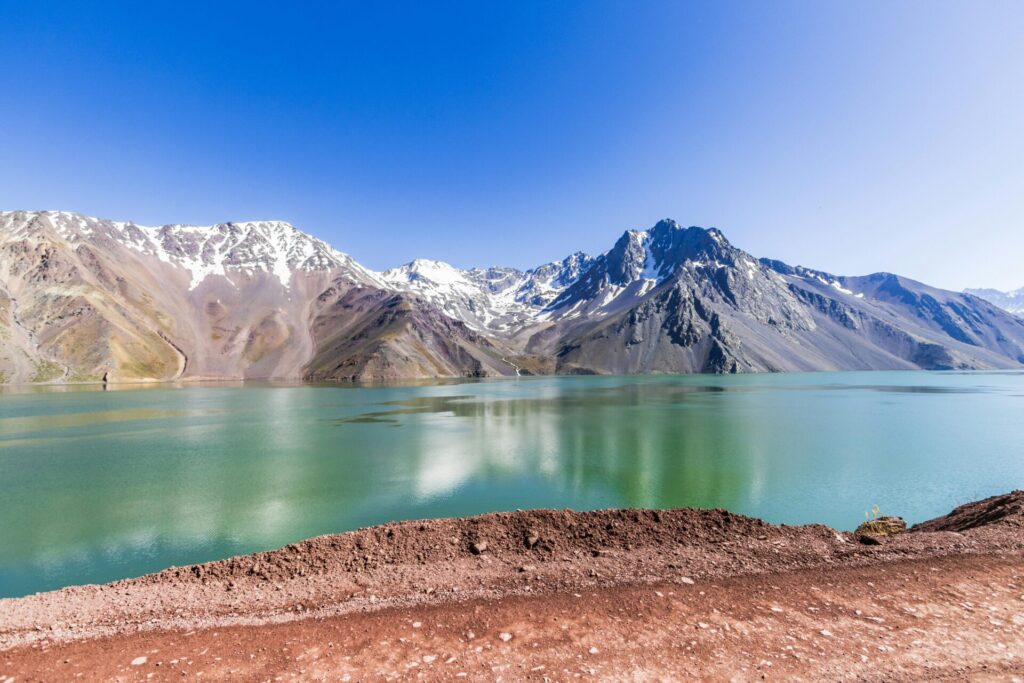
Cajón del Maipo is one of the most popular daytrips from Santiago and for good reason. It features a bright blue lake surrounded by jagged mountains. Even the drive up here is scenic. I would especially recommend this trip for those who won’t make it to Patagonia while in Chile – its your chance to experience the impressive Andes Mountain range.
Option 2: A wine tour of the Maipo Valley
Maipo Valley is home to the most famous Chilean vineyards and produces most wine variants, most notably the famous Chilean Cabernet Sauvignon. Tours here are a fantastic way to learn more about the region while sampling some delicious wine.
Option 3: Valparaiso and Vina del Mar
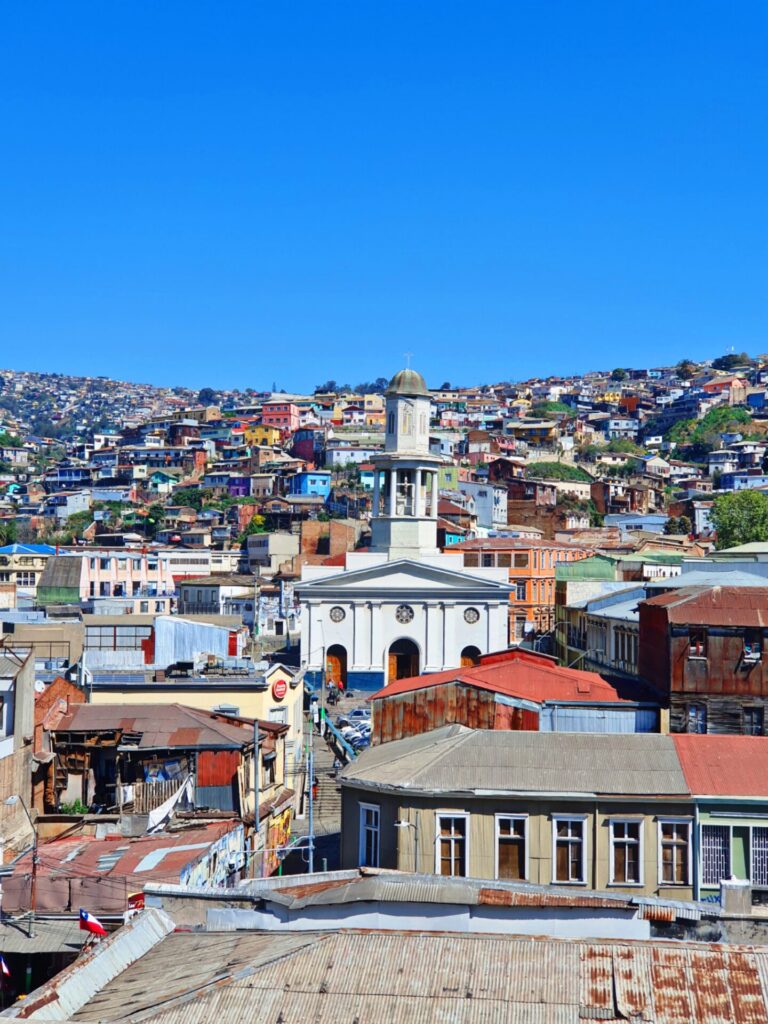
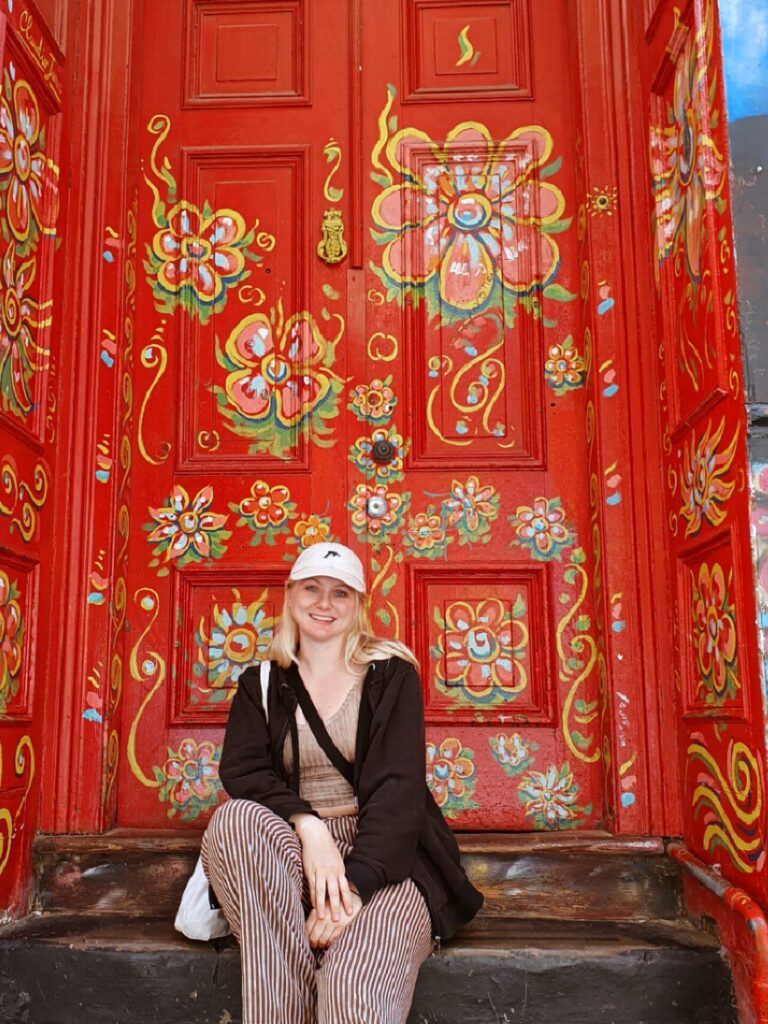
While I would highly recommend spending at least 2 days in Valparaiso and Vina del Mar, if not 3, you can also do it as a daytrip from Santiago. These areas were some of my favourite of my Chile trip, so I would only do them as a day trip if you are short on time.
Valparaiso is alive with street art, a city so vibrant it is incomparable to any other. Vina del Mar on the other hand is a beach town, with lots of delicious seafood options.
How many days do I need in Santiago, Chile?
I’d say you need at least two days to explore Santiago’s neighbourhoods and an additional 2-3 days to include some of the main day trips as well as a stay in Valparaiso (which I’d highly recommend).
Is Santiago de Chile safe?
When I first came to Santiago, I was honestly quite worried about safety. I am a solo, female traveller and had heard some horror stories about the capital. However, I have a friend who lives in Santiago and was able to give me all the tips to stay safe. Overall, I felt pretty safe and had no incidents at all while in Santiago. Here are the “rules” I would strongly recommend anyone visiting to follow:
- Stick to the touristy areas
- Don’t have your phone out when walking around as phone theft is extremely common – go into a store for example to look at directions
- Don’t walk around alone at night (especially as a girl!) – get an Uber if you find yourself away from your accommodation after dark. I went out for drinks a few times with friends and always made it safely back with Uber and they are quite affordable there.
- Avoid the downtown area unless on a tour
- Keep valuables hidden and close to your body
- Don’t wear flashy jewellery and watches – just don’t bring them
- Ask your accommodation for tips on areas and streets to avoid – they are local and will be able to help you best with this. Even in groups, there are a lot of areas that you should not go to at night.
- Choose an accommodation in a safe and touristy area, as discussed at the beginning of this article.
Hi, I'm Bell
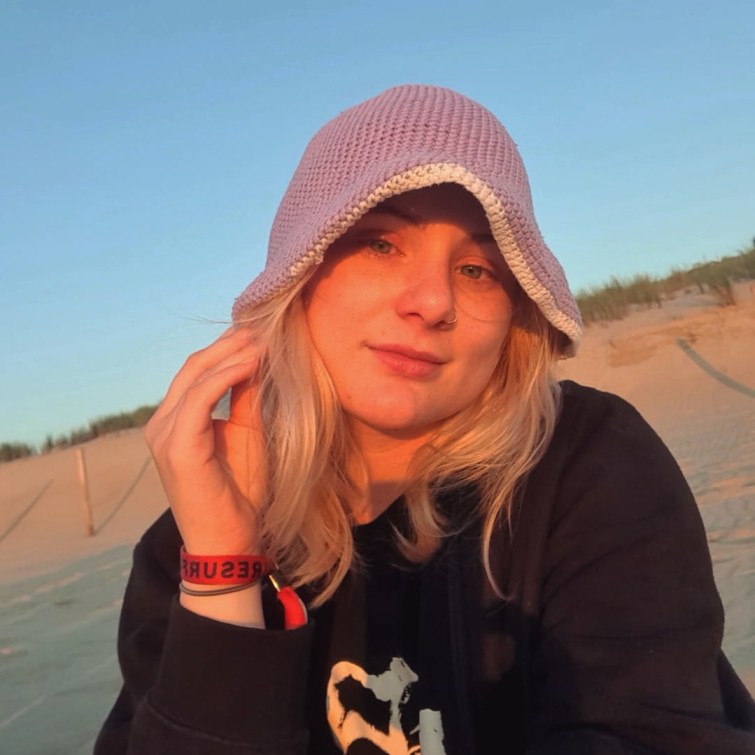
My blog is here to show you that there isn’t one correct way to travel the world. Together, we can figure out what that means for you. Learn more about me here!
Grab my Ultimate FREE Packing Guide
Travel Off Script contains affiliate links to support the running of the blog. If you make a purchase through these links, I will earn a commission at no extra cost to you. Thank you.

